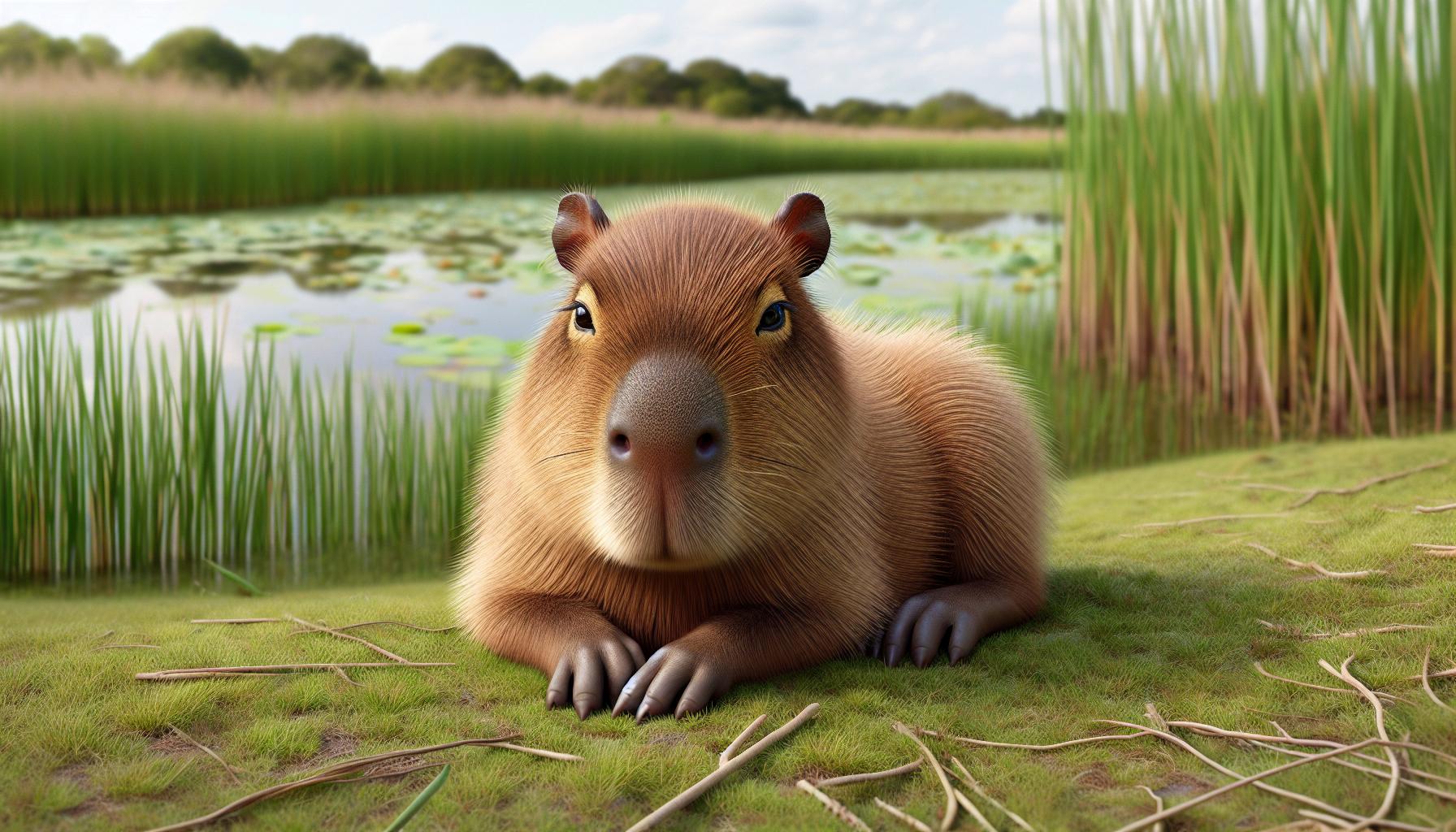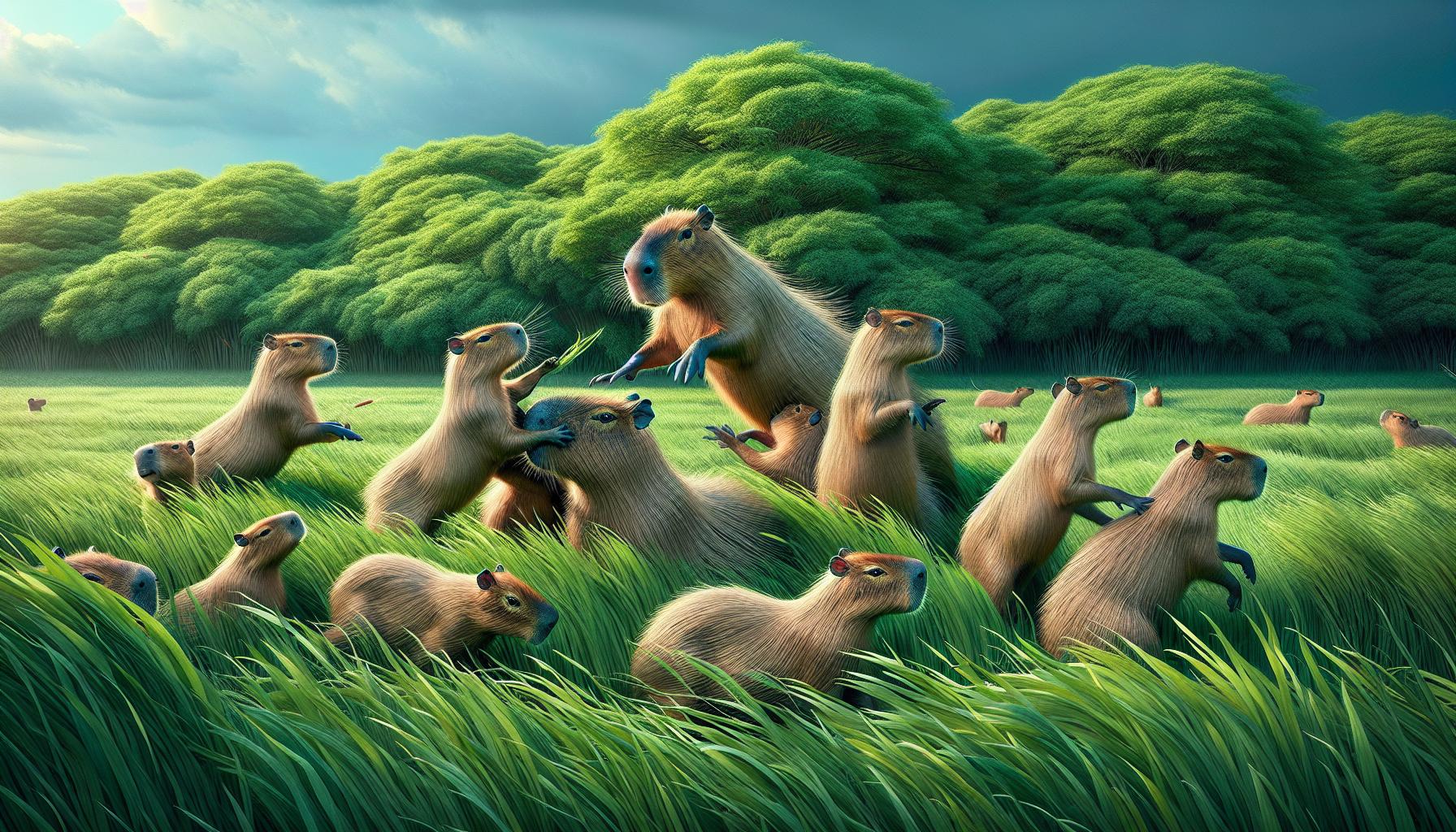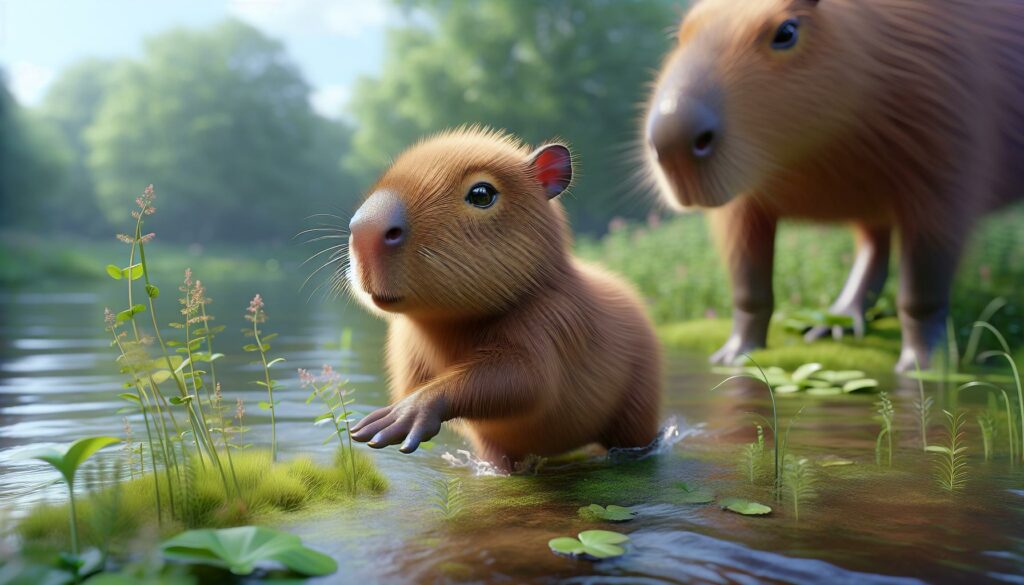When I first encountered capybaras, I was captivated by their unique charm and gentle demeanor. These adorable creatures, often dubbed the world’s largest rodents, have a way of stealing hearts with their playful antics and social nature. As I delved deeper into their world, I discovered just how fascinating these animals truly are, especially when it comes to their role in ecosystems and their interactions with humans.
- Social Creatures: Baby capybaras, or pups, are highly social and rely on their mothers and group members for protection and learning essential survival skills.
- Distinct Physical Traits: At birth, they weigh 2-3 pounds, have fur for camouflage, and possess webbed feet for swimming, making them well adapted to their aquatic environments.
- Nurturing Care: Capybara mothers exhibit strong maternal instincts, ensuring their pups have the necessary nourishment and safety during their early development.
- Diet and Habitat: Capybaras thrive in semi-aquatic habitats, feeding primarily on grasses and aquatic plants, requiring a balanced diet to support their growth and health.
- Playful Exploration: Pups engage in playful activities to develop social skills and confidence, which are crucial for integrating into their social groups effectively.
- Caring Practices: Owners of baby capybaras should provide spacious habitats, maintain cleanliness, supply proper nutrition, and ensure regular veterinary care for optimal health and well-being.
Baby:pm4wp4mamqq= Capybara
Baby:pm4wp4mamqq= capybara, also known as pups, emerge from the womb with their eyes open and fully furred. Weighing between 2 to 3 pounds at birth, these pups are relatively lightweight compared to their adult counterparts, which can reach up to 150 pounds. Their initial fur typically shows shades of brown, providing camouflage in their natural habitats.
Baby capybaras demonstrate remarkable social behavior, often staying close to their mothers for protection and nourishment. They begin to consume solid food within a week of birth, gradually transitioning to a herbivorous diet consisting of grasses and aquatic plants. Pups play frequently, engaging in social interactions that contribute to their development and establish bonds within the group.
Mother capybaras exhibit strong maternal instincts, caring for their young and ensuring their safety. In the first few weeks, pups rely heavily on their mother’s milk but quickly begin to learn from their surroundings. Observing adult capybaras teaches them essential social cues and foraging techniques crucial for survival.
In the wild, baby capybaras usually remain with their families for around a year before venturing out to form new groups. This family-oriented structure provides support for the pups as they adapt to their environment, reflecting the highly social nature of capybaras.
Physical Characteristics

Baby capybaras, also known as pups, display distinct physical traits that contribute to their survival and social interactions. Understanding these characteristics highlights their adaptability and uniqueness among rodent species.
Size and Weight
Pups measure approximately 12 to 16 inches in length at birth and generally weigh between 2 to 3 pounds. This compact size enables easy mobility, allowing pups to follow their mothers closely in various environments. As they grow, pups usually reach adult sizes of 20 to 25 inches in height and can weigh between 77 to 150 pounds, demonstrating significant growth across their first year.
Unique Features
Baby capybaras possess several unique features. Their soft, brown fur provides excellent camouflage in their natural habitats, which include grasslands and wetlands. Large, expressive eyes enable pups to see well in dim lighting, enhancing their awareness of potential dangers. Pups also have webbed feet, which aid in swimming—a common activity for capybaras. This adaptation allows them to navigate water efficiently while remaining close to their families for protection.
Behavior and Social Structure

Capybaras are known for their engaging social dynamics and playful behaviors. Their interactions with one another play a crucial role in their development and social structure.
Interaction with Other Capybaras
Capybaras thrive in social groups, often consisting of 10 to 20 individuals. These groups provide safety in numbers and support for nurturing offspring. During interactions, capybaras engage in grooming behaviors, which help strengthen social bonds and maintain hygiene. Vocalizations like barks, whistles, and clicks communicate their needs and emotions. Subgroups, such as mothers with their young, often employ protective tactics, ensuring pups are safe from predators. This social structure contributes to their overall well-being and survival in their natural habitats.
Playfulness and Exploration
Capybara pups exhibit a natural inclination for play and exploration, essential for developing social skills and confidence. They engage in playful activities like chasing, jumping, and wrestling with siblings, which fosters teamwork and bonding. Exploration of their surroundings sharpens their instincts and adaptability. The playful behavior I observe signifies healthy development, facilitating their integration within the group. Through play, young capybaras learn about their environment, enhancing their ability to navigate challenges they may encounter as adults.
Habitat and Diet

Capybaras thrive in diverse environments, particularly near bodies of water. Their habitat significantly influences their diet and social behavior.
Natural Habitat
Baby:pm4wp4mamqq= capybara primarily inhabit savannas, wetlands, and grasslands across South America, with a strong presence in countries like Brazil, Venezuela, and Colombia. These semi-aquatic rodents prefer areas close to rivers, lakes, or ponds, offering easy access to water for swimming and drinking. The surrounding vegetation, including tall grasses and reeds, provides essential cover from predators and a consistent food source. As a highly adaptable species, capybaras can also inhabit man-made areas such as farms and parks, demonstrating their flexibility in adapting to various environments.
Dietary Needs
Capybaras are herbivores with a diet rich in grasses, aquatic plants, and fruits. They consume an average of 6 to 8 pounds of food daily, preferring fresh vegetation that’s abundant in their habitats. Their strong incisors are well-suited for cutting through tough plant material, while their complex digestive systems allow for efficient nutrient absorption. In the wild, young capybaras usually start foraging by 3 weeks, learning vital foraging techniques from their mothers. Consuming fibrous materials aids digestion, while the occasional intake of fruits or plant seeds enhances their nutritional diversity. Adjustments in their diet may occur with seasonal changes, ensuring robust health throughout the year.
Caring for Baby Capybaras
Caring for baby:pm4wp4mamqq= capybara requires understanding their specific needs to ensure they thrive. Proper care includes managing their diet, environment, and health.
Best Practices for Owners
- Provide a Spacious Habitat: Ensure sufficient space for pups to roam, typically at least 100 square feet per baby capybara. Access to both land and water is crucial for swimming and socialization.
- Maintain Clean Environment: Regularly clean the living area to prevent the buildup of waste and bacteria. Use non-toxic cleaning agents to avoid harming the pups.
- Offer Proper Nutrition: Supply a balanced diet consisting of high-quality hay, fresh vegetables, and occasional fruits. Aim for 6 to 8 pounds of greens daily, adjusting quantities as the pups grow.
- Encourage Social Interaction: Allow pups to interact with other capybaras to foster social skills. Group settings provide security and comfort, promoting healthy development.
- Ensure Access to Fresh Water: Provide fresh drinking water daily, along with a shallow area for swimming. Ensure the water remains clean and change it regularly.
- Digestive Issues: Monitor for signs of diarrhea or constipation. Consult a veterinarian if digestive issues persist, as improper diets can induce health problems.
- Respiratory Infections: Watch for symptoms like sneezing or labored breathing. Low temperatures and drafts can increase the risk, so maintain a stable climate.
- Skin Problems: Inspect for hair loss or irritation. Parasites or allergies may cause skin issues, requiring veterinary attention for treatment.
- Overheating: Ensure a shaded area, especially during hot weather. Capybaras are susceptible to heat stress, so access to cool spots becomes essential during high temperatures.
- Dental Health: Regularly check for signs of dental overgrowth. Proper chews can help maintain dental health, as capybaras require wood or fibrous materials for grinding their teeth.
Baby capybaras are truly fascinating creatures that embody the charm and social nature of their species. Their early experiences with family and environment shape their development into the engaging adults we admire. Understanding their needs and behaviors not only enhances our appreciation for them but also ensures they thrive in both wild and domestic settings.
As I continue to explore the world of capybaras, I’m reminded of the importance of nurturing their natural instincts and providing a supportive environment. Whether in the wild or as pets, these gentle giants deserve our respect and care, making them a delightful addition to our lives.

